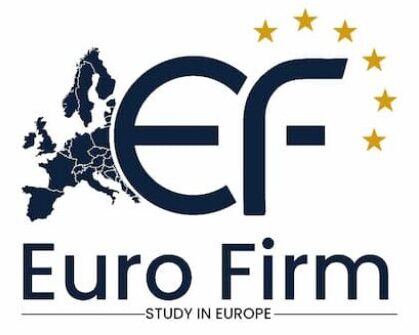The Bologna Process is a European-wide initiative launched in 1999 to reform and unify higher education systems across the continent. Its primary goal is to create a cohesive European Higher Education Area (EHEA), where degrees and qualifications are transparent, comparable, and internationally recognized. Built on core principles such as the three-cycle degree system (Bachelor’s, Master’s, Doctorate), the European Credit Transfer and Accumulation System (ECTS), and quality assurance, the Bologna Process enhances academic mobility, employability, and institutional collaboration. With 49 participating countries, including non-EU nations, it fosters equal access to education and aligns academic programs with global labor market needs. The Bologna Process has become a global reference point for education reform, influencing systems far beyond Europe’s borders.
Origins and Background
The Bologna Process began with the Bologna Declaration, signed on June 19, 1999, by education ministers from 29 European countries. The declaration sought to establish a coherent and cohesive European Higher Education Area by 2010. The main objective was to make European higher education more competitive and attractive globally, while also promoting student and staff mobility and ensuring employability.
This initiative was a response to the increasing need for standardization in educational qualifications, which was especially important as the European Union expanded and as globalization influenced the job market. Over the years, the number of participating countries has grown to 49, including non-EU members, reflecting its broad appeal and significance.
Key Objectives of the Bologna Process
The Bologna Process revolves around several core objectives:
Adoption of a Three-Cycle Degree System
The first cycle (Bachelor’s), second cycle (Master’s), and third cycle (Doctorate) structure makes academic qualifications transparent and comparable across nations.
Establishment of a Credit System (ECTS)
The European Credit Transfer and Accumulation System helps students transfer credits between institutions and countries, promoting academic mobility.
Quality Assurance
A shared framework for evaluating academic programs ensures the maintenance and improvement of educational standards across Europe.
Recognition of Qualifications and Periods of Study
Facilitates mutual recognition of degrees and learning periods through established frameworks like ENIC-NARIC networks.
Mobility of Students and Staff
Encourages student exchanges and academic staff mobility by reducing barriers and harmonizing academic structures.
Lifelong Learning
Promotes education at all stages of life to adapt to labor market changes and personal development needs.
Inclusion and Social Dimension
Aims to provide fair access to higher education regardless of background, emphasizing equity and inclusion.
Employability
Aligns academic programs with labor market needs, ensuring graduates are equipped with relevant skills.
European Higher Education Area (EHEA)
The European Higher Education Area was officially launched in 2010 as the result of ongoing efforts through the Bologna Process. It includes 49 countries and aims to ensure that higher education systems across Europe are compatible and comparable. The EHEA enhances student choice and ensures that education standards are maintained.
Implementation and Progress
Each participating country implements the Bologna reforms according to its national context. While progress varies, several common trends have emerged:
- Degree Structure: Most institutions now follow the three-cycle system.
- Credit Transfer: ECTS has been widely adopted, facilitating student exchange programs like Erasmus+.
- Quality Assurance: National agencies, often linked through the European Association for Quality Assurance in Higher Education (ENQA), oversee academic quality.
However, challenges persist. Inconsistencies in implementation, recognition issues, and bureaucratic hurdles still hinder full harmonization.
Impact on Students and Universities
For students, the Bologna Process has improved academic mobility, recognition of qualifications, and access to international opportunities. It also provides clearer pathways from undergraduate to postgraduate education.
For universities, the process encourages modernization, international collaboration, and curriculum development aligned with global trends. It also allows institutions to attract more international students by offering globally recognized qualifications.
Bologna Process and Non-European Countries
While rooted in Europe, the Bologna Process has influenced higher education systems globally. Countries in Asia, Africa, and Latin America observe and sometimes adopt Bologna principles to align with international standards and improve competitiveness. For international students, this alignment provides clarity and assurance when choosing European institutions.
Current Priorities and Challenges
As of recent ministerial conferences, the Bologna Process is focusing on:
- Digitalization: Enhancing digital tools for learning and mobility.
- Academic Freedom: Safeguarding the autonomy and freedom of academic institutions and staff.
- Climate and Sustainability: Integrating environmental awareness into higher education.
Challenges include varying political commitments, uneven funding, and differences in national education policies. Some countries face resistance to change or lack the infrastructure to fully implement Bologna standards.
Criticism of the Bologna Process
Despite its achievements, the Bologna Process has faced criticism:
- Over-standardization: Critics argue it may reduce academic diversity.
- Increased Bureaucracy: Implementation has introduced administrative burdens.
- Pressure on Students: The compressed structure of some programs can lead to increased stress.
Nonetheless, the general consensus is that the benefits outweigh the drawbacks, especially in terms of mobility and international recognition.
Conclusion
The Bologna Process represents a milestone in higher education reform, fostering greater cohesion, transparency, and quality across Europe. For students, it opens up a wealth of opportunities to pursue studies across borders. For universities, it facilitates cooperation and global competitiveness. As the world continues to evolve, the Bologna Process remains a dynamic tool for shaping a more integrated and inclusive educational landscape.
Understanding the Bologna Process is crucial for students planning to study in Europe and for institutions aiming to align with international academic standards. Whether you’re a prospective student, educator, or policymaker, the principles and progress of the Bologna Process offer valuable insights into the future of higher education.
FAQs:
What is the Bologna Process?
The Bologna Process is a European initiative that standardizes higher education systems across countries to ensure compatibility and quality of degrees.
When did the Bologna Process start?
It began in 1999 with the signing of the Bologna Declaration by 29 European countries.
What is the European Higher Education Area (EHEA)?
EHEA is a unified academic space created by the Bologna Process to harmonize higher education across participating countries.
How many countries are part of the Bologna Process?
As of now, 49 countries, including non-EU members, participate in the Bologna Process.
What are the three academic cycles under the Bologna Process?
The three cycles are Bachelor’s (first cycle), Master’s (second cycle), and Doctorate (third cycle).
What is ECTS in the Bologna Process?
The European Credit Transfer and Accumulation System (ECTS) allows easy transfer and recognition of academic credits between universities.
Does the Bologna Process affect international students?
Yes, it improves degree recognition, mobility, and access to education in Europe for international students.
What are the main goals of the Bologna Process?
Its goals include standardizing degree structures, enhancing quality assurance, promoting mobility, and increasing employability.
How has the Bologna Process helped universities?
It supports modernization, global partnerships, and the ability to offer degrees recognized across borders.
Is IELTS required under the Bologna Process?
IELTS is not part of the Bologna Process itself; language requirements vary by institution and country.


